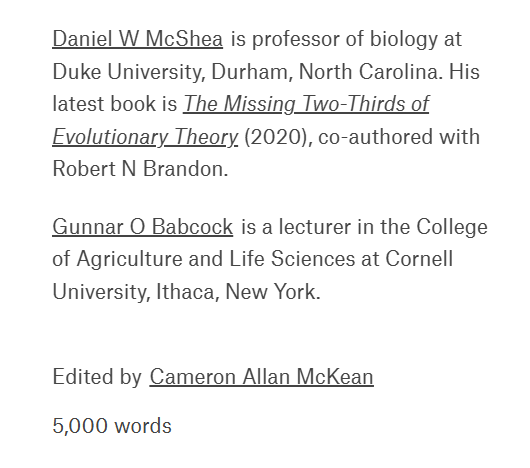Welcome to DU!
The truly grassroots left-of-center political community where regular people, not algorithms, drive the discussions and set the standards.
Join the community:
Create a free account
Support DU (and get rid of ads!):
Become a Star Member
Latest Breaking News
Editorials & Other Articles
General Discussion
The DU Lounge
All Forums
Issue Forums
Culture Forums
Alliance Forums
Region Forums
Support Forums
Help & Search
Elusive but everywhere

A new theory argues that unseen ‘fields’ guide all goal-directed things in the Universe, from falling rocks to voyaging turtles
https://aeon.co/essays/a-new-field-theory-reveals-the-hidden-forces-that-guide-us

A green sea turtle in the ocean off Hawaii. Photo by Michael Riffle/Getty

Why do rocks fall? Before Isaac Newton introduced his revolutionary law of gravity in 1687, many natural scientists and philosophers thought that rocks fell because falling was an essential part of their nature. For Aristotle, seeking the ground was an intrinsic property of rocks. The same principle, he argued, also explained why things like acorns grew into oak trees. According to this explanation, every physical object in the Universe, from rocks to people, moved and changed because it had an internal purpose or goal.
Modern science has rejected this ‘teleological’ way of thinking. In the 17th and 18th centuries, scientists and philosophers began to chip away at Aristotle’s seemingly ‘spooky’ notion of intrinsic causes – spooky because they suggested that rocks and creatures were guided by something not entirely material. For those who rejected these Aristotelean explanations, such as Thomas Hobbes and René Descartes, organisms were simply complex machines animated by mechanisms. ‘Life is but a motion of limbs,’ wrote Hobbes in his Leviathan (1651). ‘For what is the heart, but a spring; and the nerves, but so many strings; and the joints, but so many wheels, giving motion to the whole body.’ The heart does not have the goal of circulating blood. It’s just a spring like any other. For many thinkers at the time, this view had real explanatory benefits because they knew something about how machines worked, including how to fix them. It was in this intellectual environment that Newton developed a powerful mechanical worldview, based on his discovery of gravitational fields. In a Newtonian universe, internal purpose doesn’t cause rocks to fall. They just fall, following a law of nature.
Mechanistic explanations, however, struggled to explain how life develops. How does a grass seed become a blade of grass, in the face of endless disturbances from its environment? Long after the mechanistic revolution, the philosopher Immanuel Kant confronted the stubborn problem of teleology and despaired. In 1790, he wrote in the Critique of Judgment that – as commonly paraphrased – ‘there will never be a Newton for a blade of grass.’ Less than a century later, with the publication of On the Origin of Species (1859), Charles Darwin seemed to crack the problem of biological teleology. Darwin’s ideas about natural selection appeared to explain how organisms, from grass seeds to bats, were able to pursue goals. The directing process was blind variation and the selective retention of favourable variants. Bats who sought moths and had an ever-improved capacity to track and catch them were favoured over those who were less goal directed and therefore had lesser capabilities. Though natural selection seemed to illuminate what Descartes, Hobbes and Kant could not, Darwin’s theory answered only half the problem of teleology. Selection explained where teleological systems like moth-seeking bats come from but didn’t answer how they find their goals.
So, how do goal-directed entities do it, moment by moment? How does an acorn seek its adult form? How does a homing torpedo find its target? Mechanistic thinking struggles to answer these questions. From a mechanical perspective, these systems look strangely future oriented. A sea turtle, hundreds of miles out to sea, can find the beach where it was born, a location that lies in its future. A developing embryo, without any thought of the future, constructs tissues and organs that it will not need until much later in life. And both do these things persistently: carried off course by a strong current, the sea turtle persistently finds a trajectory back toward its natal beach; despite errors in cell division and gene expression, an embryo is able to make corrections as it grows into its adult form. How is this possible?
snip
1 replies
 = new reply since forum marked as read
Highlight:
NoneDon't highlight anything
5 newestHighlight 5 most recent replies
= new reply since forum marked as read
Highlight:
NoneDon't highlight anything
5 newestHighlight 5 most recent replies
Elusive but everywhere (Original Post)
Celerity
Aug 2025
OP
Their "field theory" is a bunch of bullshit they present no evidence for, just a lot of handwaving & hypothesizing
Bernardo de La Paz
Aug 2025
#1
Bernardo de La Paz
(60,197 posts)1. Their "field theory" is a bunch of bullshit they present no evidence for, just a lot of handwaving & hypothesizing
It is just as much magical thinking as the "aether" that early 19th century physicists were convinced of.
And magical thinking like Lamarckism.
What a lot of nonsense and muddled thinking that article is.